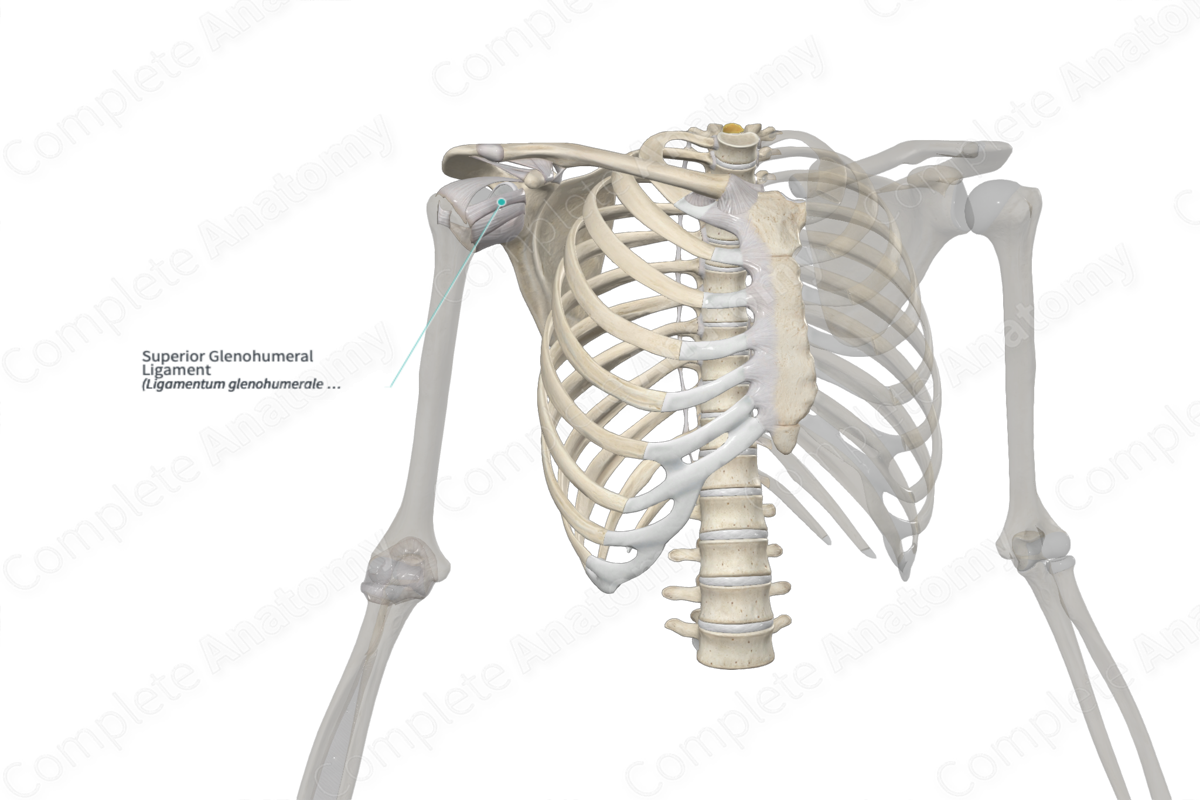
Anatomical Relations
The glenohumeral ligaments include the superior, middle, and inferior ligaments.
The superior glenohumeral ligament passes from the supraglenoid tubercle, adjacent to the origin of the long head of biceps brachii muscle, to the proximal tip of the lesser tubercle of the humerus. It forms the anterior cover for the tendon of the long head of biceps brachii muscle.
Related parts of the anatomy
Structure
The glenohumeral ligaments are fibrous bands and are only truly evident from within the joint.
Function
The superior glenohumeral ligament reinforces the articular capsule of the glenohumeral joint, particularly the anterior portion of the capsule. Additionally, together with the coracohumeral ligament, it helps suspend the humeral head, thus stabilizing the joint.
List of clinical correlates
—Glenohumeral joint dislocation
Learn more about this topic from other Elsevier products
Glenohumeral Ligaments

The IGHL is the major stabilizer of the glenohumeral joint and is comprised of three components: the anterior band, the axillary pouch, and the posterior band (O'Brien et al., 1990).



